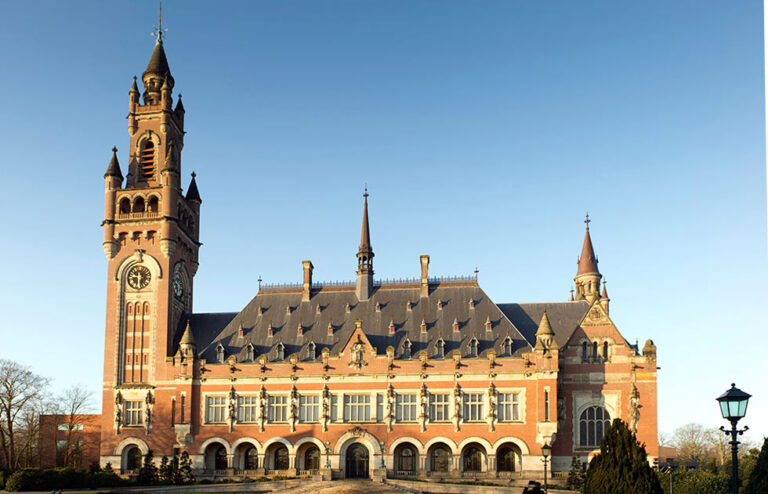
At the first glance, the forests and the woodlands of the Gambia tinged in different shades of green, look menacing and breathtaking in equal measure. They are dotted with riverine vegetation, palm and hardwood trees. They are speckled with salt flats, savanna and mangrove creeks.
Adorned with an array of prominent baobabs, striking silk-cotton trees and jades of mangrove forests found both far inland and along the humid banks of the River Gambia, the country holds 480 000 hectares of forests with unseen promise.
These forests and woodlands have, however, seen swift depletion due to a rapidly increasing population as well as unsustainable resource extraction and uncontrolled forest fires. The growing rural population in this West African nation has struggled with poverty and with sustainably managing these dryland forests while relying on them for their livelihoods and food security.
Desertification and land degradation are major environmental issues faced in the Gambia today. This is highly pronounced in the regions north of the Gambia River. Dryland forests in the country play a pivotal role in halting desertification. Though the forestry sector in the Gambia is reported to contribute to about only 1.2 per cent of the national Gross Domestic Product, it holds great socio-economic significance to rural livelihoods.
“High levels of deforestation and land degradation in the region caused mainly by human activities are contributing to droughts, erratic rainfall, disasters, poverty and food insecurity,” said Alpha Mariam Khan, the District Chief of Kuntaya, one of the communities in the North Bank Region of the country.
“There is already a very high demand for honey and honey byproducts for both human consumption and industrial use at the national and global levels. This creates a good market,” he adds.
In Kuntaya, like in many other places of the Gambia, a project to encourage beekeeping is being implemented and is not only changing the lives of the people but also helping create awareness among them about the importance of forests.

Through a flagship programme spearheaded by the Gambia’s Department of Forestry, the “Community-based Sustainable Dryland Forest Management” project has outfitted groups of community beekeepers, known locally as Honey Enterprise Groups, with beekeeping equipment such as beehives, uniforms, boots, gloves, uniforms and hive tools. With the support of the Food and Agriculture Organization of the United Nations, through this Global Environment Facility (GEF)-funded project, the Honey Enterprise Groups are constructing beehives in the forest to harvest honey for their livelihoods.
A total of 10 567 people, approximately 50 per cent women and 50 per cent men, in 18 communities in the Gambia are expected to benefit from this initiative.
“I would have never thought that our dream of implementing our honey enterprise development plan would come to fruition,” said community beekeeper, Kombeh Njie, as she and her team install 40 beehives at an apiary in Jiffarong village in the Lower River Region in the south of the country.
“Although there have been numerous talks about forest enterprise development in the past, it is only with the current support from the GEF project that our community has had any tangible opportunity to improve our incomes and enhance our livelihoods through honey production. This has indeed changed our lives.”
Members of the Honey Enterprise Groups recently constructed 205 beehives in the nation through a Cash for Work initiative supported by the project. The Natural Resource Consulting, a local non-governmental organization and one of the project’s implementing partners, in collaboration with the National Beekeepers Association of the Gambia trained the groups on the construction of beehives. FAO and the Gambia’s Forestry Department plan to further scale up the honey business throughout the country to provide employment opportunities.
“The honey enterprise initiative provides an opportunity to contribute to the sustainable management of the dryland forests, as forest conservation is our collective responsibility. I call open people of our district to make good use of the opportunity for the benefit of the present and future generations,” Kombeh Njie added.
“Once these beehives are all colonized, the income stream of the beekeepers will increase through the sale of honey and its byproducts. The project will enhance their resilience to possible climate shocks while they will be contributing to forests and biodiversity conservation,” Sambou Nget, FAO’s GEF Project Coordinator said.
Jarra Njie, a female member of the community, states, “Before I used to depend only on seasonal agricultural production to generate income but with the introduction of beekeeping in my community and training provided through the project on value addition to honey products, I now make body cream from beeswax which I sell to supplement my income.”
The project’s overall objective is to halt environmental degradation and the growing threat of desertification in the Gambia because of continued deforestation. The project helps with the legal procedures for community ownership of forests and empowers community members with the skills and knowledge necessary to sustainably manage their natural resources and conserve biodiversity.
“The FAO-GEF forestry project is indeed a blessing for the farmers, livestock and the forests,” said Tara Bah, President of the Joint Sakuru Daala Forest Park Management Committee and a member of the honey enterprise group. “Our forest was saved from bushfires in 2020 thanks to the training the forest park rangers received from the project. The honey enterprise initiative, in particular, will boost households’ food security, nutrition and income.”
FAO stated it works with the Gambia to diversify agriculture, increase fisheries production and improve nutrition while encouraging the sustainable management of natural resources. Projects in the country aim to strengthen the food and agriculture sector to provide livelihoods while supporting communities in mitigating and adapting to climate change impacts.
Source: the FAO News and Media office
– global bihari bureau





